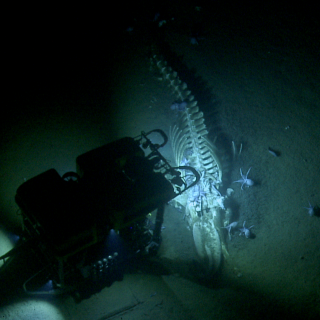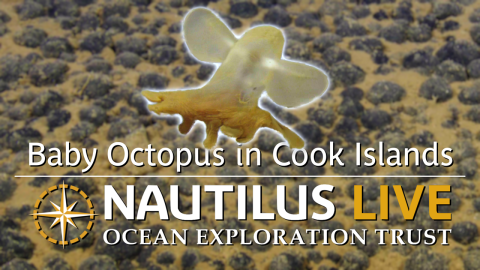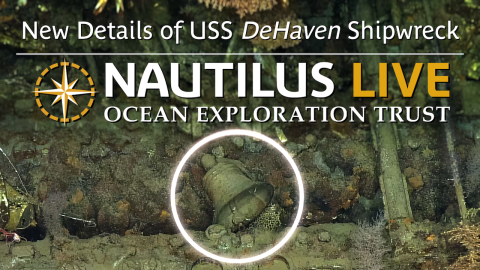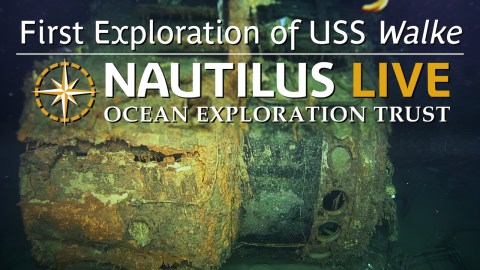Descending the Cascading Walls of Pioneer Canyon
The steep, cascading walls of Pioneer Canyon in Monterey Bay National Marine Sanctuary (MBNMS) are home to an abundant plethora of species, from deep-sea catsharks to magnificent bamboo and bubble gum-hued corals. While diving in this rich, biodiverse region off of the coast of Central California, E/V Nautilus researchers spotted sea stars, sea cucumbers, deep-sea gastropods, and — perhaps most surprisingly — a vintage piece of ceramic with that had been reclaimed by a sea anemone!
A feather-like nudibranch with horn-shaped sensory structures, or rhinophores, surprised the Corps of Exploration when it measured in at an estimated 20-centimeters! These “voracious predators” feed on octocorals and, sure enough, where there are nudibranchs there are bound to be large areas of complex and diverse coral forests. Because corals are long-lived and record past environmental conditions in their skeletal structures, they provide another service by helping scientists understand how these communities may have been affected by past climate fluctuations
Previous Nautilus exploration dives in 2016 and 2017 mapped Pioneer Canyon, revealing fractured rock formations, steep rocky pinnacles, and submerged shipwrecks in the deeper portion of the canyon and adjacent areas, including a series of small munitions piles of bullets and ammunition boxes. Our main objectives in 2020 were to describe the extent of deep-sea corals, sponges, and associated invertebrate and fish within the deeper portions of Pioneer Canyon, from 800 to just under 1500 meters (2600 to 5000 feet).

Central California NMS
This joint expedition will visit three distinct areas of Monterey Bay National Marine Sanctuary (MBNMS), a region comprising one of the world’s most productive and biologically rich ocean areas protecting over 700 species of fish and deep benthic species. Pioneer Canyon is in the northern portion of MBNMS, and is administered by Greater Farallones National Marine Sanctuary.



